17 Key Software Development Trends
- Updated: Nov 11, 2024
- 10 min
As we make our way through 2025, the software development industry is rapidly evolving with new technologies, methodologies, and a growing demand for innovative solutions.
With global IT spending at an all-time high, it’s more important than ever for professionals and businesses to stay ahead of the curve on software development trends.
In this article, we’ll explore the 17 most influential software development trends defining the future of software creation and deployment.
Bring your app idea to life with our expert software developers — contact us today to get started!
Key Software Development Statistics for 2025
- The software development market is forecasted to achieve $858.10 billion by 2028, with a CAGR of 5.27%.
- About 84.7% of software development projects focus on enterprise applications.
- JavaScript is the most used programming language, preferred by 65.82% of professional developers.
- Around 54% of software engineers report being more productive when working from home.
- The Internet of Things (IoT) is expected to encompass over 75 billion devices by 2025.
- Nearly 69% of businesses have adopted cloud computing technology.
1. Low-Code/No-Code Development
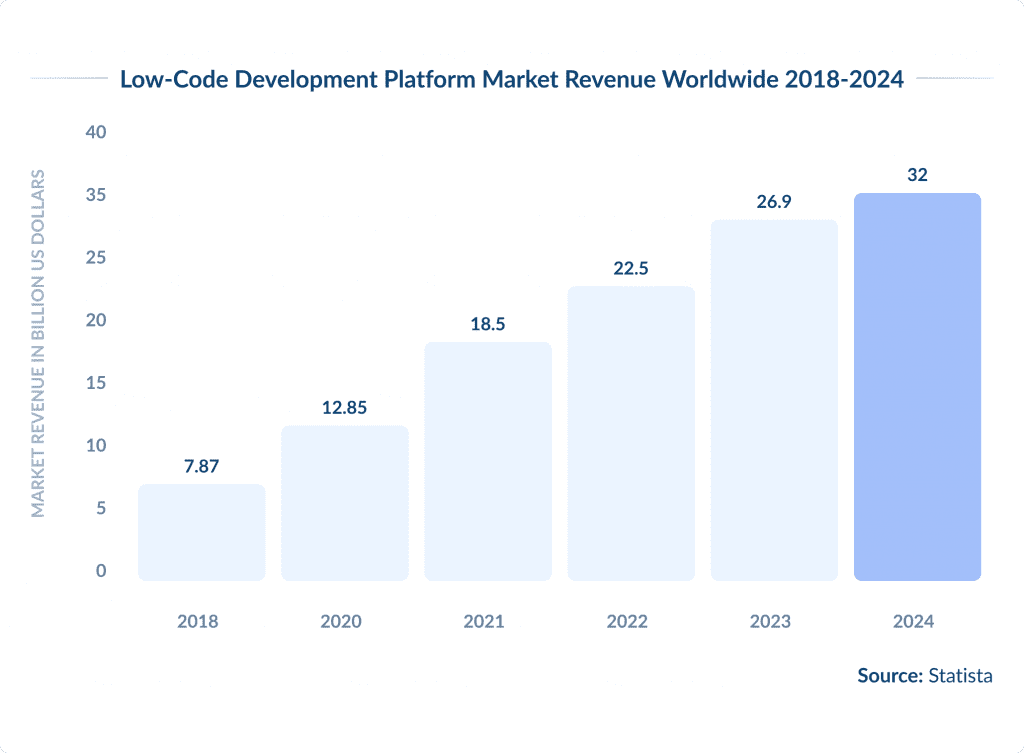
Low-code/no-code development platforms have completely transformed how digital applications are built, making it easier for people without technical expertise to create software.
By 2025, these platforms are expected to be used in almost 70% of all app development projects, a significant increase from previous years.
For example, Microsoft’s PowerApps has reported hosting over 10 million monthly active users, which shows how widespread the adoption of these platforms has become.
This democratization of development is not just about accessibility; it’s also about efficiency.
According to a study by Forrester, businesses have reported up to 70% reductions in development costs and time.
As digital transformation initiatives speed up, the demand for rapid application deployment has made low-code/no-code solutions indispensable.
They are now a key factor in enterprise strategy, with a projected market growth of $32 billion by the end of 2025, as reported by Statista.
2. Containerization and Microservices
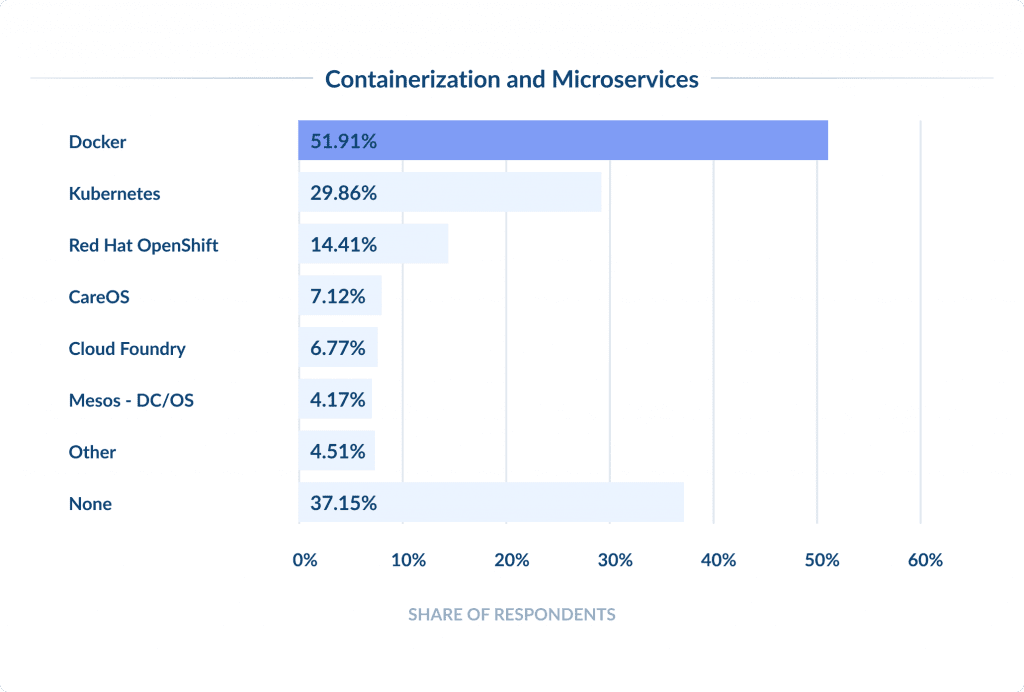
Containerization, led by platforms such as Docker and Kubernetes, has seen tremendous growth, with Docker reporting over 11 million developer users globally.
The microservices architecture complements containerization by breaking down applications into smaller and independently deployable services has been equally transformational.
Amazon Web Services (AWS), a leader in the container services market, recently revealed that over 80% of all containerized applications are now deployed using microservices.
This architectural style enhances scalability and agility, allowing companies like Netflix and Amazon to deploy hundreds or thousands of service updates daily.
According to a report by Allied Market Research, the global market for microservices architecture was valued at $2.07 billion in 2019 and is expected to reach $8.07 billion by 2026, indicating a compound annual growth rate (CAGR) of 22.5%.
The streaming market is booming. Discover how to start a streaming service like Netflix and claim your space.
3. Integration of AI and Machine Learning
AI and Machine Learning use in software development is becoming increasingly popular in the US.
According to a 2020 O’Reilly survey, over 48% of businesses and organizations in the US have already adopted AI in some form.
This number has only increased since then, with AI startups raising a whopping $50 billion in 2023 alone, indicating a strong investment in AI technologies.
AI can be used in software development for various applications, from automated code generation and testing to advanced predictive analytics and customization features.
The AI market in the US was valued at approximately $37.5 billion in 2022 and is projected to reach $731.8 billion by 2032. A significant portion of this growth is expected to come from applications in software development and enterprise solutions.
4. Continued Rise of Remote/Hybrid Work
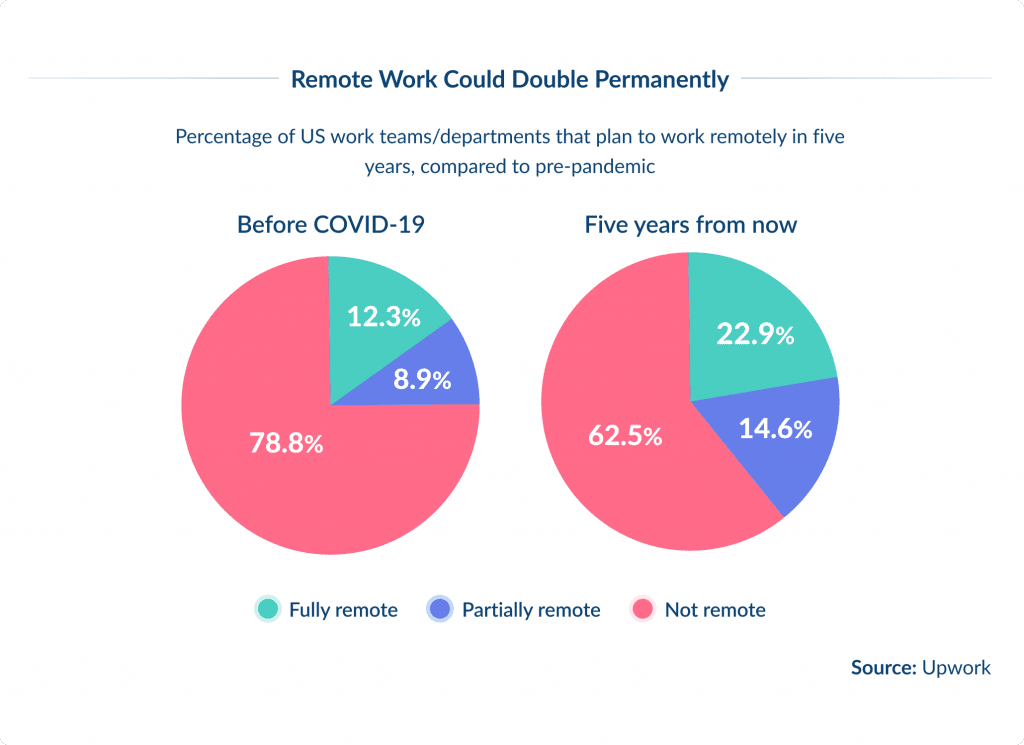
The move towards remote and hybrid work models has been one of the most significant changes in the global workforce.
As a result, new software tools and platforms are being developed to facilitate collaboration, communication, and project management for distributed teams.
Leaders in video conferencing, such as Zoom, have reported a significant increase in daily meeting participants, jumping from 10 million in December 2019 to over 300 million in April 2020.
This shift in work models is reshaping software development priorities, focusing more on cloud-based solutions, security, and user experience to support the remote workforce.
Cloud-based app development enables businesses to provide reliable, fast service to their customers.
According to projections, the remote workforce is expected to represent over 20% of the workforce by 2025 in the United States alone.
For efficient task handling, here are the best project management software options available today.
5. Emphasis on Cloud Services
According to IDC, cloud services have become the backbone of modern IT infrastructure, with public cloud spending expected to reach $678.8 billion in 2025.
This growth is driven by the need for scalable, flexible, and cost-effective computing resources. Amazon Web Services (AWS), Microsoft Azure, and Google Cloud Platform (GCP) dominate the market, collectively holding over 60% of the global cloud infrastructure market share. Discover the strengths and weaknesses of Digital Ocean, AWS, and Google Cloud to find your ideal match.
Cloud services enable businesses to leverage advanced computing capabilities, including AI, machine learning, and big data analytics, without significant upfront investment in physical hardware.
The global pandemic has further accelerated this trend, with a 37% increase in cloud spending in the first quarter of 2020 compared to the same period in 2019.
Cloud computing is not just a trend; it’s becoming a critical element of digital transformation strategies across all industries.
6. Growing Use of Blockchain Technology
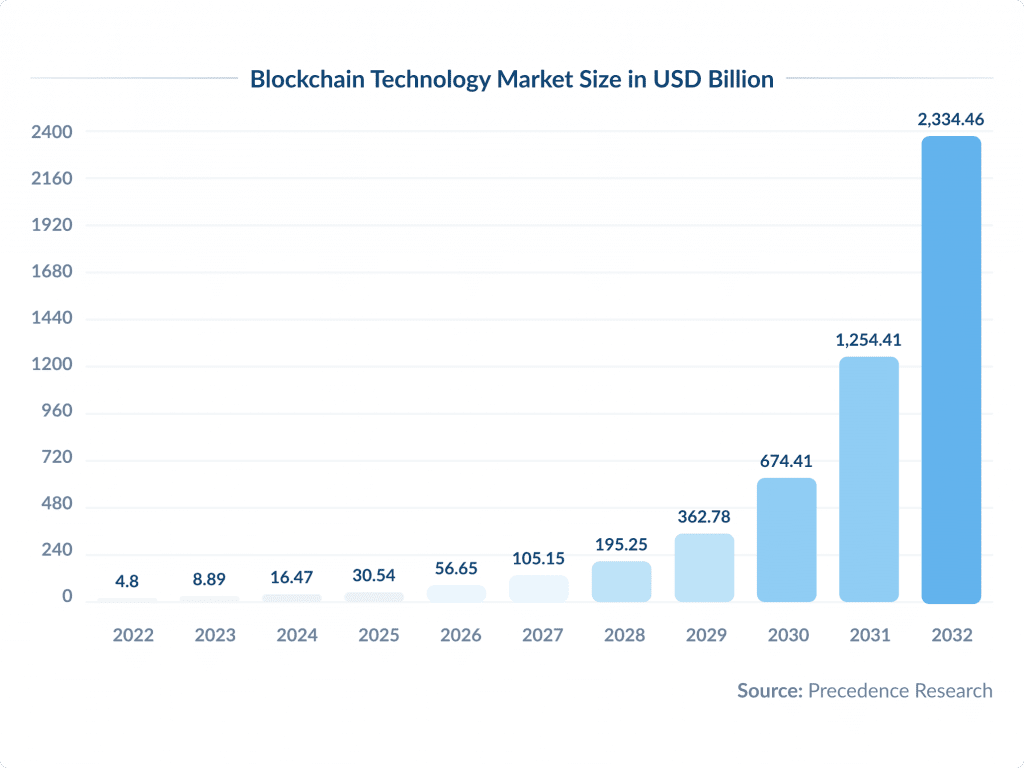
Blockchain technology has quickly evolved from its initial association with cryptocurrencies to various applications across various industries.
In 2025, global spending on blockchain solutions reached $19 billion, indicating its growing importance beyond financial applications.
Well-known companies like Walmart and Maersk have implemented blockchain for supply chain management, which has improved transparency, efficiency, and security.
IBM has reported over 500 active blockchain projects, showcasing the technology’s versatility in tracking, contracts, and securely transferring data.
The healthcare sector has also seen blockchain adoption with projects like MediLedger, which aims to secure and streamline the pharmaceutical supply chain.
As trust and data integrity continue to be paramount, the blockchain technology market is expected to grow to over $39 billion by 2025, according to MarketsandMarkets research.
Discover the best healthcare startups making a significant impact in the industry.
Access premium design and development services for unmatched success.
7. Evolution of AI Technologies
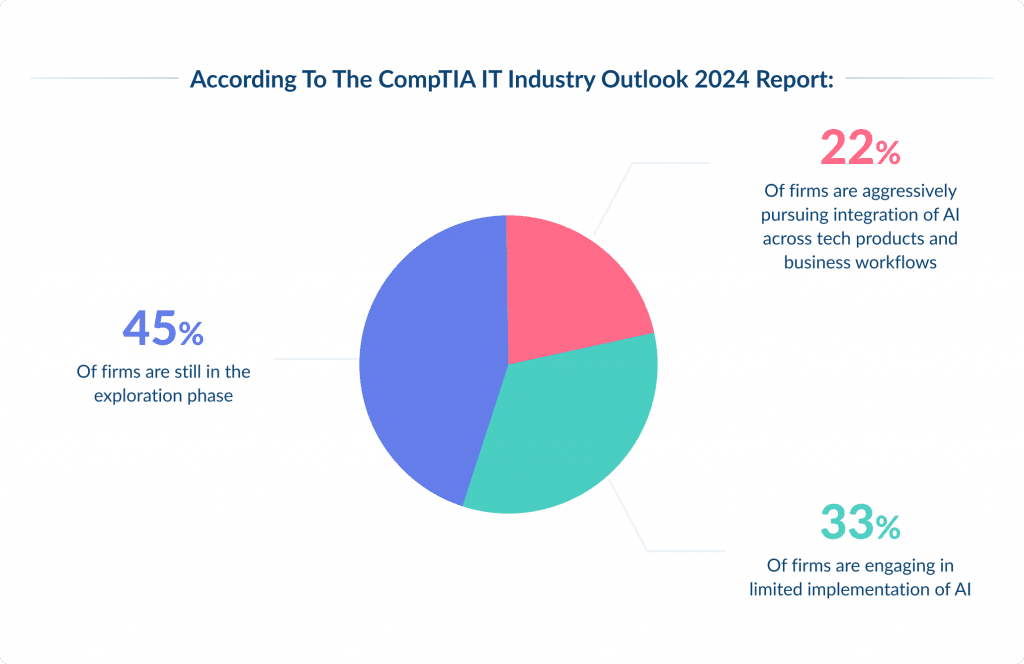
The pace of development of Artificial Intelligence (AI) technologies is rapidly accelerating, with significant progress in natural language processing (NLP), machine learning (ML), and computer vision.
OpenAI’s GPT-3, launched in 2020, has demonstrated the potential of AI in generating human-like text, offering unprecedented capabilities in content creation, programming, and even design.
AI’s impact on healthcare has been remarkable, with tools like Google’s DeepMind AI achieving breakthroughs in protein folding, a significant challenge in biology.
According to Grand View Research, the AI market size, worth approximately $196 billion in 2023, is projected to grow to $1.8 trillion by 2030.
This growth is driven by AI’s integration into consumer products, enterprise solutions, and government initiatives to leverage AI for public services, indicating its central role in the next wave of technological innovation.
8. Increased Importance of Data Privacy
The issue of data privacy has become a top priority for software development, fueled by regulatory changes and growing public concern over data misuse.
The implementation of the General Data Protection Regulation (GDPR) in the European Union and similar regulations around the world has significantly impacted how companies collect, store, and process personal information.
In 2020 Google announced its intention to phase out third-party cookies in Chrome by 2022. This move towards Google ending third-party cookies aims to protect user data and limit tracking by external entities. Apple’s iOS 15 update also introduced app tracking transparency, which now requires apps to obtain user permission before tracking their activity.
developers.
If you’re new to iOS, explore these best iOS app development tools that will simplify the process.
According to the market research firm MarketsandMarkets, the global data protection as a service (DPaaS) market is projected to grow from $28 billion in 2022 to $361.5 billion by 2032.
9. Growth of Machine Learning Ops (MLOps)
Machine Learning Operations (MLOps) is becoming an essential practice in AI and machine learning. It is focused on making the entire machine-learning process more efficient and effective, from preparing the data to deploying and monitoring the model.
MLOps aims to bridge the gap between developing a machine learning model and making it work in the real world. It ensures that models can scale, are reliable, and can be smoothly integrated into business operations.
The adoption of MLOps is growing fast, with the MLOps market size expected to expand from $350 million in 2019 to $4 billion by 2025, according to Cognilytica.
This growth is driven by the need for businesses to move beyond experimental AI projects to deploy and manage AI at scale, highlighting the importance of MLOps in enabling effective, real-world AI applications.
10. Uptick in Native App Development
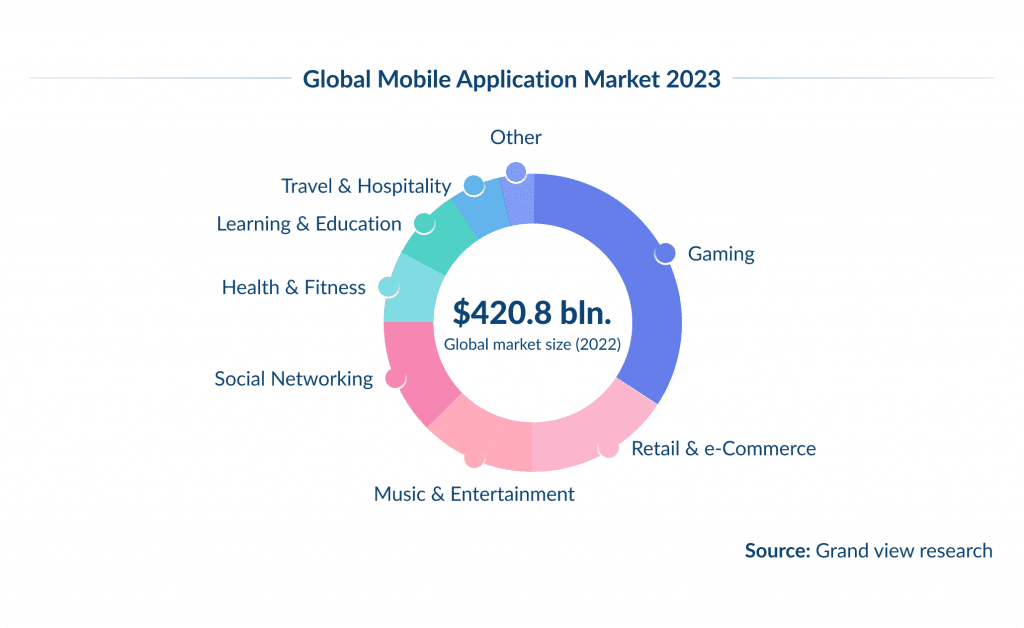
Native app development remains a major trend in the tech world, despite the emergence of cross-platform frameworks. It offers top-notch performance, a superior user experience, and full access to device features.
The popularity of Apple’s App Store and Google’s Play Store is growing by the day, with over 1.83 billion apps and 3.47 million apps, respectively, as of 2024.
The demand for native mobile applications is driven by the need for high-quality, responsive, and secure applications that take full advantage of the underlying platform.
According to Statista, the global mobile application market was valued at $420.8 billion in 2022 and is expected to reach $673.8 billion by 2027.
These IT trends highlight the critical role of native app development in delivering customized, captivating user experiences in today’s mobile-centric digital environment.
Each of these trends represents a significant area of growth and innovation in software development, reflecting the ever-evolving technological landscape and the rising importance of software in both personal and professional spheres.
11. Rise in Progressive Web Apps

More and more businesses are turning to Progressive Web Apps (PWAs) to get the best of both worlds – combining the accessibility and searchability of a website with the responsiveness and engagement of a native app.
According to Google, PWAs can boost conversion rates by up to 36% compared to traditional mobile apps.
Big companies like Starbucks, Uber, and Pinterest have already jumped on board and successfully leveraged PWAs to enhance user experience, leading to higher engagement and conversion rates.
For example, Pinterest’s PWA led to a 60% increase in engagement and a 44% increase in user-generated ad revenue.
The growing popularity of PWAs can be attributed to their ability to work offline, load quickly, and improve user engagement, making them an attractive option for businesses looking to optimize their online presence.
12. Emphasis on Cybersecurity
In the US, cybersecurity is a top priority as cybercrime is becoming more frequent and sophisticated.
According to Cybersecurity Ventures, the global cost of cybercrime is projected to reach $10.5 trillion annually by 2025.
Cybersecurity AI tools have also become increasingly popular, as they can predict and neutralize threats more quickly than humans.
Companies like Darktrace, which leverages AI for cyber defense, reported a 45.3% revenue increase, highlighting the growing reliance on advanced technologies to safeguard digital assets.
The focus on cybersecurity is not only about protecting data but also about ensuring trust and continuity in a world that is becoming increasingly digital.
Expertise gap? Let's bridge it together. Share your needs and elevate your team with our experts.
13. Platform Engineering Becomes a Crucial Force
Platform engineering is gaining significant momentum in the world of software development.
It involves creating and maintaining scalable and reliable software platforms that enable developers to build and deploy applications efficiently.
This trend is about optimizing the developer experience, reducing time-to-market, and enhancing collaboration across the dedicated development team and other departments. Companies invest in internal developer platforms (IDPs) that streamline their software delivery processes to achieve these goals.
For example, Netflix’s Spinnaker, an open-source continuous delivery platform, supports the company’s ability to perform thousands of daily deployments.
The global DevOps market size, which encompasses platform engineering practices, is expected to grow to $25.5 billion by 2028, according to MarketsandMarkets, reflecting the increasing importance of efficient, scalable software delivery mechanisms.
Check out our DevOps services to learn more about our DevOps practices and tools.
14. Boost in IT Outsourcing
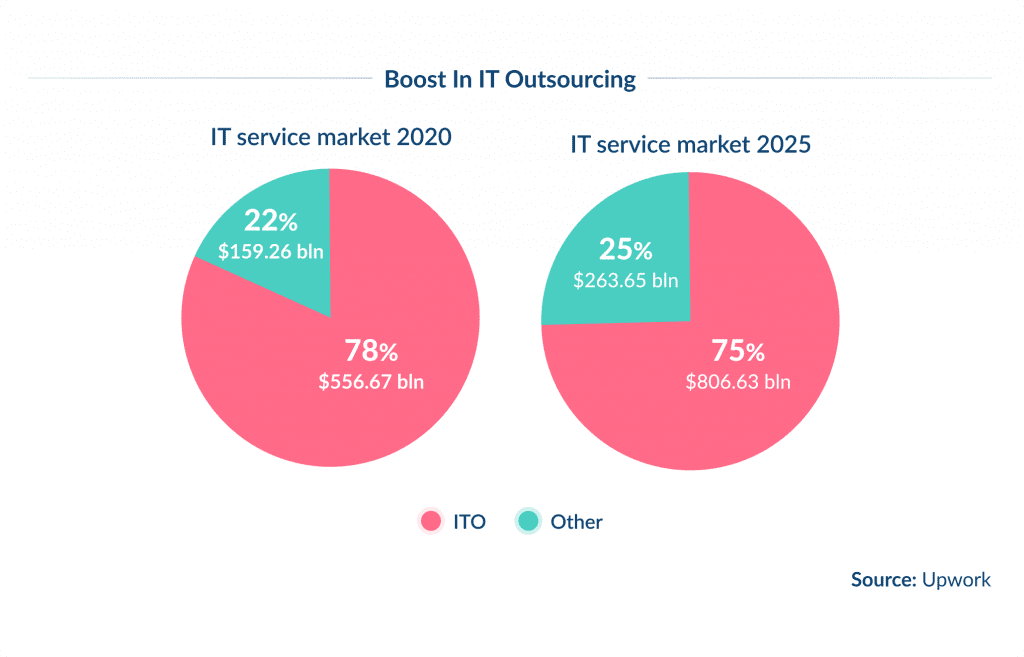
IT outsourcing is becoming increasingly popular in the US as companies seek to access specialized skills, reduce costs, and focus on their core business functions.
The global IT outsourcing market was valued at $731 billion in 2023 and is expected to grow.
The COVID-19 pandemic has accelerated this trend, with more businesses relying on remote teams and outsourced partners for software development, cybersecurity, and IT support.
Countries like India, Ukraine, and Poland have emerged as popular outsourcing destinations due to their combination of technical expertise and cost efficiency.
Need a remote team to support your project? Check out our guide on how to hire a dedicated remote team for top results.
15. Sustainable Software Development Focus
Sustainable software development is gaining popularity in the US as more businesses become conscious of their environmental impact.
This approach involves creating software that minimizes its carbon footprint, optimizes resource use, and maximizes energy efficiency.
Recently, some of the biggest names in the tech industry launched the Green Software Foundation, including Microsoft, Accenture, GitHub, and ThoughtWorks. The foundation aims to establish a reliable community of people, standards, and best practices for sustainable software development.
The focus on sustainability is not just limited to software development but also to data centers and cloud services hosting digital products. Many cloud providers have pledged to use renewable energy sources and achieve carbon neutrality targets.
This shift towards sustainable software development is part of a broader trend in the tech industry towards environmental responsibility.
Selecting the right hosting solution is key to your SaaS success. Learn about the best options in our guide to hosting for SaaS.
16. Emergence of Ambient Computing
The integration of technology into our everyday environments, known as ambient computing, is becoming increasingly commonplace.
This trend is driven by the proliferation of IoT devices, wearable technology, and smart home systems, which work together to create an ecosystem where technology anticipates and responds to human needs without explicit commands.
Google’s Nest and Amazon’s Alexa are leading examples of this technology, with their platforms continually expanding their capabilities and integrations.
According to Statista, the global market for smart home devices, a key component of ambient computing, is projected to grow to over $154.4 billion by 2025.
This shift towards more personalized, context-aware computing experiences is blurring the lines between the physical and digital worlds and represents a paradigm shift in the way we interact with technology.
17. Companies Opt for Outsourcing in the Face of IT Skills Shortage
As per a report by Korn Ferry, this shortage is expected to rise to 85 million people globally by 2030, leading to a loss of $8.5 trillion in annual revenues.
The shortage is specifically felt in areas such as AI, cloud computing, and cybersecurity, where the need for skilled professionals outpaces their availability.
Outsourcing enables companies to access a global pool of talent, ensuring that they can stay ahead of the curve with cutting-edge technologies and maintain a competitive edge.
This approach not only fills the immediate skills gap but also offers a flexible and scalable solution that allows organizations to easily adapt to evolving market demands and changing technological trends.
Conclusion
Software development trends are moving towards sophisticated and user-centric solutions.
Understanding and applying these trends is crucial for creating resilient software products.
The future is full of opportunities for growth and innovation, and staying ahead means continuously learning and evolving.
Hiring remotely doesn’t have to be daunting. Discover how to outsource your software development smoothly.












